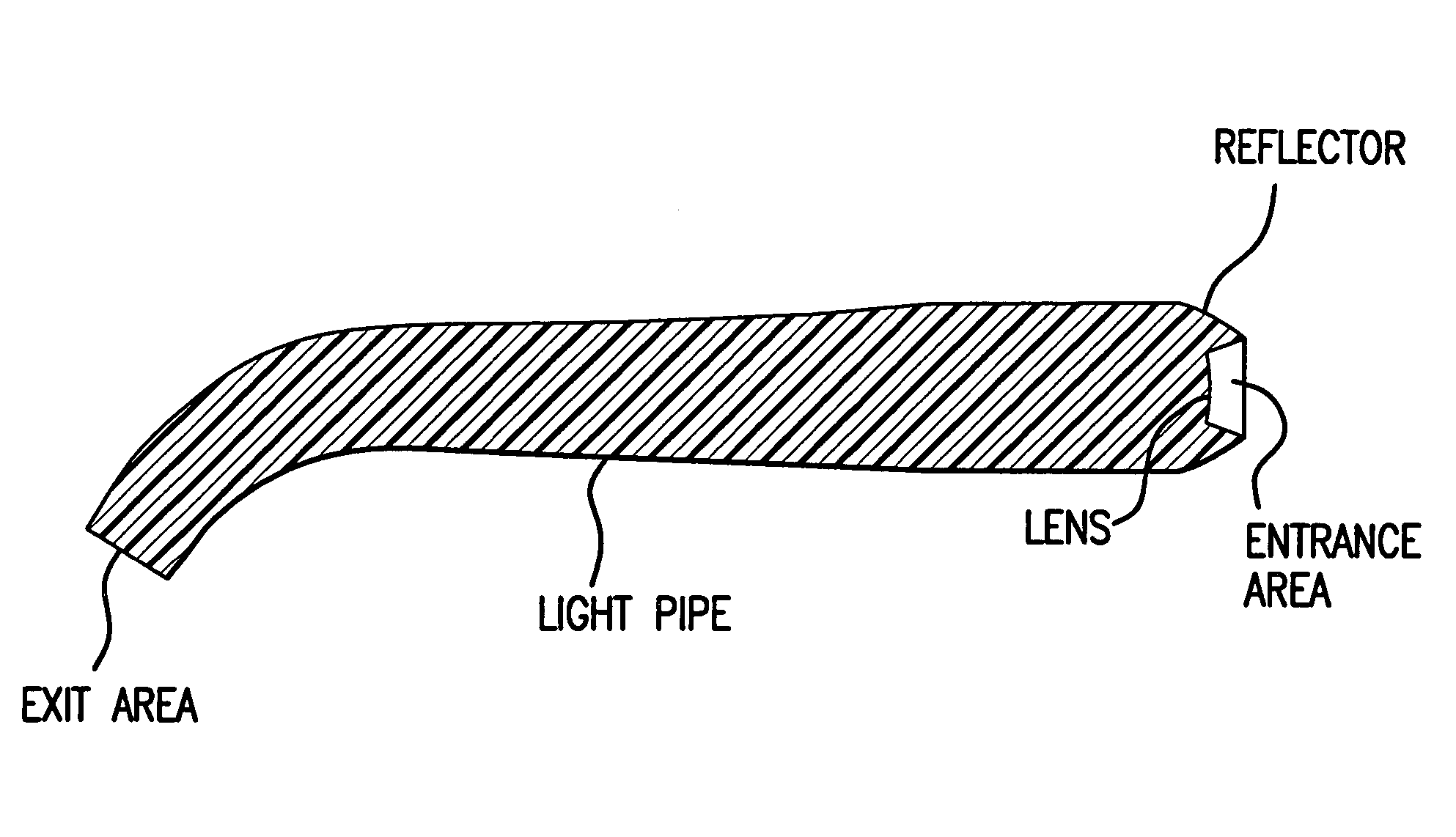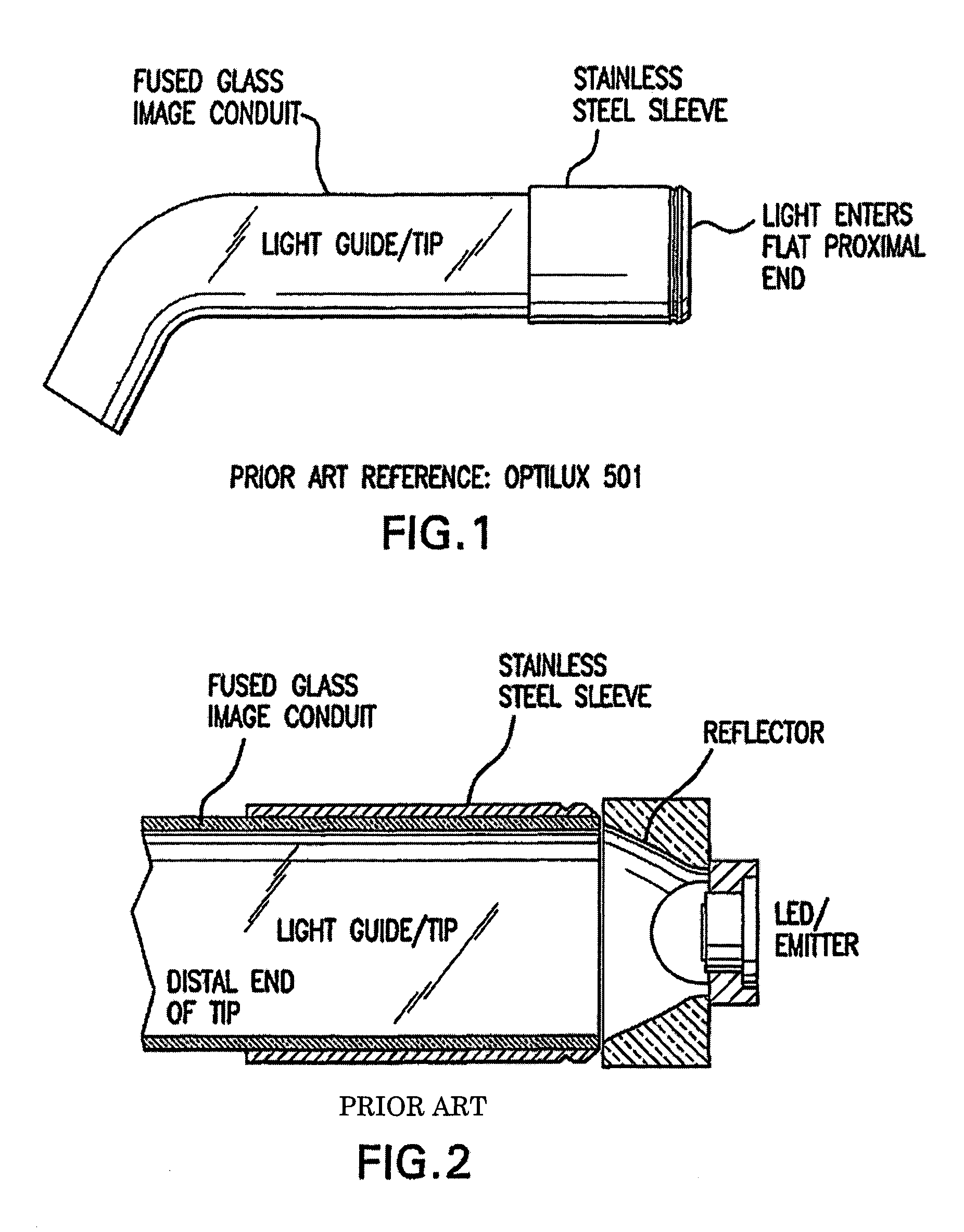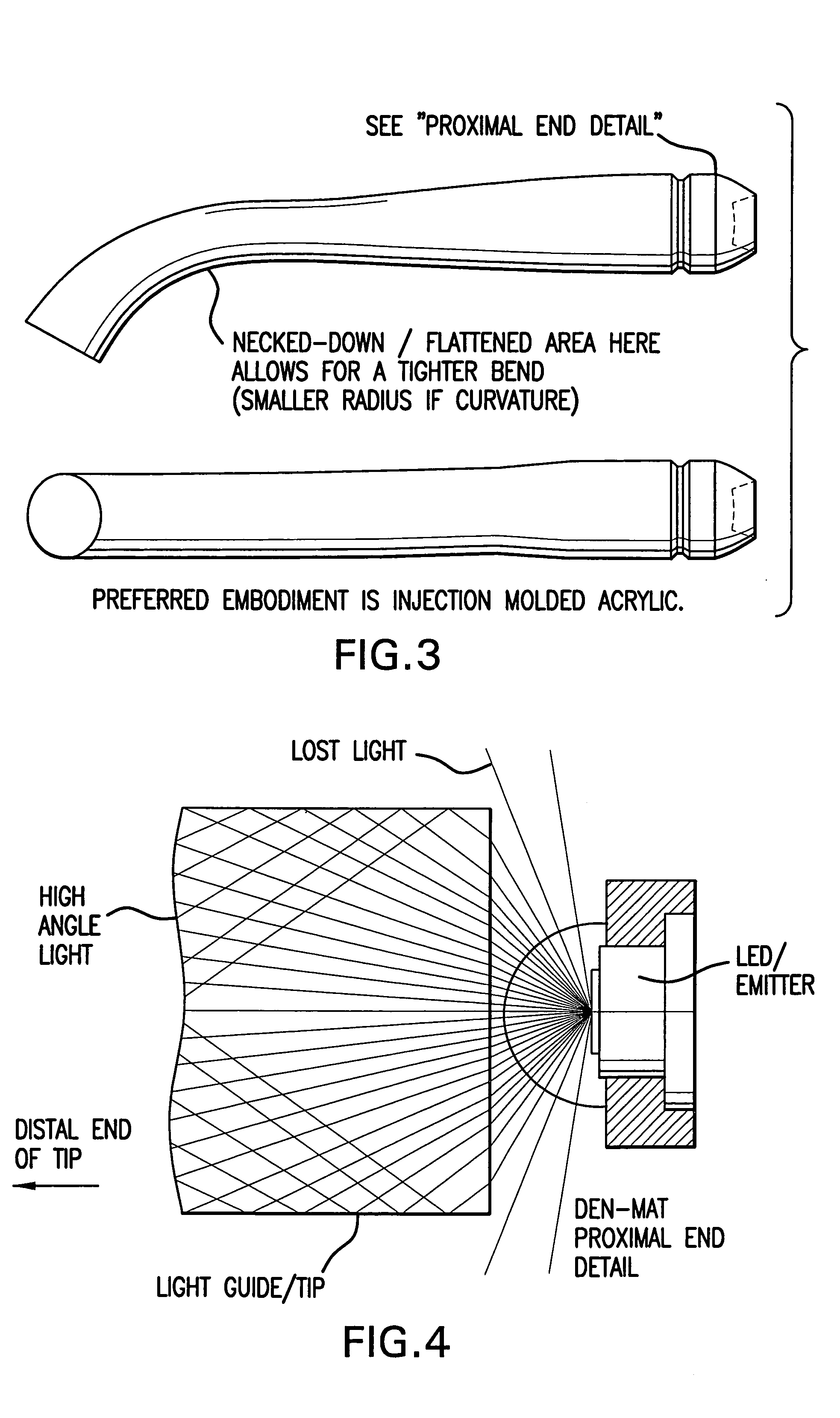Dental light guide
a technology of light guides and light sources, applied in the direction of luminescence, optical radiation measurement, instruments, etc., can solve the problems of ineffective light guides, and loss of light energy, and achieve the effect of not very efficient light sources such as tungsten halogen, metal halide, and xenon in producing light energy within the spectral rang
- Summary
- Abstract
- Description
- Claims
- Application Information
AI Technical Summary
Benefits of technology
Problems solved by technology
Method used
Image
Examples
example 1
[0052]It has been demonstrated that light intensity (mW / cm2) disperses rapidly with distance from these light sources. The exit angle of the light as it leaves the light source contributes greatly to this. As the beam spread increases the light looses intensity rapidly. This is clinically significant to the practicing dentist and their patients. The bottom floor of a typical preparation may be a minimum of 2 mm deep or more. If the light intensity is too low at the bottom of the filling the composite material may not receive enough energy to adequately cure. Even if the composite is placed directly on the surface of the tooth the dentist holds the distal end of the light guide approximately 2 mm away to keep the composite from adhering to it. The clinical advantage of the present invention is that the light intensity mW / cm2) increases at 2 mm away from the surface and stays higher as distance increases. This facilitates complete curing of the composite. The results of this experimen...
example 2
[0053]The effect of light collimation with an embodiment of the instant invention (identified in FIG. 11 as “Allegro”) on a composite (Heliomolar) that is hard to cure is shown in the FIG. 11. FIG. 11 also compares the embodiment of the instant invention to the other 3 best LED-curing lights on the market. The instant invention is clearly superior. The composite was cured at a distance of 6 mm. See FIG. 12. The vertical axis shows the hardness value. Knoop Hardness (KHN) is considered, by academics, the most accurate test of composite hardness. Greater hardness means the composite has polymerized to a greater degree. This improves strength and wear and decreases the likelihood of sensitivity. The bottom of the sample is actually 8 mm away from the distal end of the tip.
[0054]FIG. 13A illustrates a top view of a multiple LED embodiment of the present invention. The cross-sectional view is shown in FIG. 13B. In this embodiment, the light source comprises an array of individual LED eac...
PUM
 Login to View More
Login to View More Abstract
Description
Claims
Application Information
 Login to View More
Login to View More - R&D
- Intellectual Property
- Life Sciences
- Materials
- Tech Scout
- Unparalleled Data Quality
- Higher Quality Content
- 60% Fewer Hallucinations
Browse by: Latest US Patents, China's latest patents, Technical Efficacy Thesaurus, Application Domain, Technology Topic, Popular Technical Reports.
© 2025 PatSnap. All rights reserved.Legal|Privacy policy|Modern Slavery Act Transparency Statement|Sitemap|About US| Contact US: help@patsnap.com



